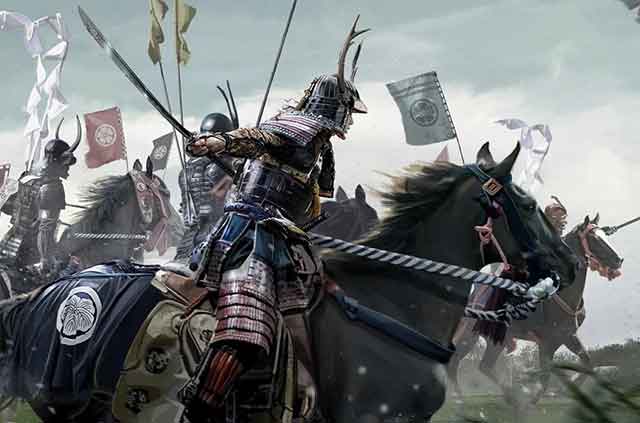
In the year 1560, Imagawa Yoshimoto, a formidable warlord who held dominion over the provinces of Suruga, Totomi, and Mikawa, gathered a mighty army of 25,000 men. His objective was to march upon Kyoto, challenging the increasingly feeble and ineffectual Ashikaga shogunate for control of Japan. The army traced its path along the Tokaido highway, crossing from Mikawa into Owari province, recently unified by the local warlord, Oda Nobunaga.
Before the battle.
The Imagawa forces swiftly overran Oda's border fortresses, including Washizu, while the Matsudaira forces, led by Matsudaira Motoyasu, captured Marune fortress. Meanwhile, Yoshimoto established his camp at Dengakuhazama, situated in the village of Okehazama, just outside the present-day city of Nagoya. In contrast, Oda Nobunaga could muster only about 2,000-3,000 men, a mere fraction of the Imagawa army's strength. Despite some of his advisors recommending withdrawal to the Oda stronghold of Kiyosu Castle, Nobunaga recognized that Kiyosu was ill-equipped to withstand a siege. He asserted that only a resolute offensive strategy could compensate for the enemy's overwhelming numbers and thus ordered a counterattack. The geography of the area where the Imagawa camped was well-known to Nobunaga and his scouts, as they had often used the terrain for military exercises during falconry hunts.
On the evening preceding the battle, Nobunaga addressed his troops, emphasizing that waiting would lead to their demise. He urged them to confront the enemy head-on and then sent them home to rest. Early the following morning, Nobunaga, after dressing and reciting a passage from the song "Atsumori," which emphasized the transitory nature of life, donned his armor. He hastily consumed a bowl of rice porridge while standing and departed for the battlefield.
The Battle
Nobunaga personally led his troops from Kiyosu, passing through Atsuta Shrine, to reach a fortified temple known as Zensho-ji. This temple was located a short distance from Okehazama, on the opposite side of the Tokaido road. To deceive any Imagawa scouts, Nobunaga ordered his men to erect numerous flags and banners around Zensho-ji, creating the illusion of a much larger force.
The precise sequence of events during the Battle of Okehazama remains obscured by legend and historical uncertainty. Conventionally, it was believed that on June 12, due to the vast numerical disadvantage, Nobunaga and his forces concealed themselves in an area known as Kamagatani, situated on the other side of the Imagawa's main camp. The Oda forces then executed a flanking maneuver, attacking the Imagawa army from the north. However, owing to the Oda forces' familiarity with the terrain and Nobunaga's inclination for aggressive tactics, many modern historians theorize that the attack was, in fact, a frontal assault on Yoshimoto's camp, whether intentional or accidental.
Regardless of the specific tactics employed, the Imagawa army was caught completely off guard. They had been celebrating their recent victories, and due to the scorching afternoon heat, many warriors had removed their armor. Exploiting a sudden thunderstorm to mask their approach, Oda's troops launched a ferocious attack at the heart of the Imagawa camp, nestled in a narrow valley. This surprise assault induced panic among the Imagawa ranks, with many attempting to flee.
Imagawa Yoshimoto, initially unaware of the unfolding catastrophe, eventually heard the commotion and emerged from his tent, shouting at his men to abandon their revelry and return to their posts. However, within moments, he realized that the samurai before him were not his own, but it was too late to organize a defense. Contrary to popular belief, Yoshimoto was not killed in his war camp. He and his men hastily abandoned their camp and rushed toward the ongoing battle.
Yoshimoto found himself under attack by Mori Shinsuke and Hattori Koheita. In a desperate melee, Yoshimoto, along with his followers Munenobu and Naomori, engaged these assailants. Yoshimoto managed to fend off an initial strike from Mori Shinsuke, who wielded a spear, by cutting through the Oda samurai's weapon and into the man’s knee. However, he was soon tackled by another Oda samurai, Hattori Koheita, who swiftly decapitated the general.
With their leader and nearly all senior officers slain, the remaining Imagawa troops either surrendered or fled.
Aftermath
The Battle of Okehazama stands as one of the pivotal turning points in Japanese history. The Imagawa clan suffered severe weakening and would subsequently be obliterated by neighboring rivals. Oda Nobunaga's prestige soared, and many samurai and minor warlords, including Imagawa's former retainer, Matsudaira Motoyasu, who would later become Tokugawa Ieyasu, pledged their loyalty.
This battle marked the first instance in which Nobunaga recognized the talents of Kinoshita Tokichiro, the sandal-bearer, who would eventually rise to prominence as Toyotomi Hideyoshi.
See also
-
The Siege of Hara Castle

The Shimabara Rebellion of 1637–1638, which culminated in the siege of Hara Castle, was the last major uprising of the Edo period and had serious political consequences.
-
Battle of Tennoji
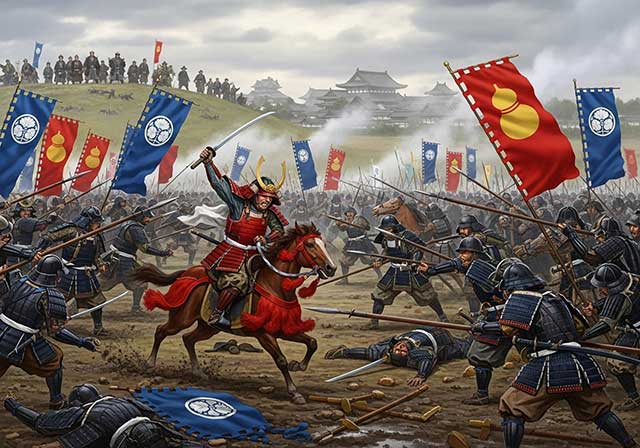
The confrontation between Tokugawa Ieyasu and Toyotomi Hideyori during the “Osaka Winter Campaign” ended with the signing of a peace treaty. On January 22, 1615, the day after the treaty was signed, Ieyasu pretended to disband his army. In reality, this meant that the Shimazu forces withdrew to the nearest port. On the same day, almost the entire Tokugawa army began filling in the outer moat.
-
Siege of Shuri Castle
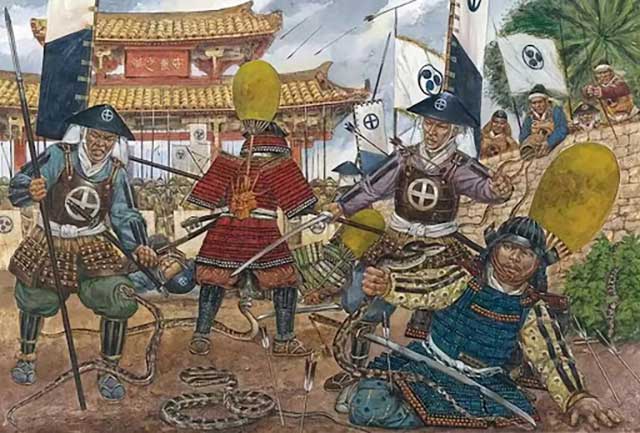
The Ryukyu Kingdom was established in 1429 on Okinawa, the largest island of the Ryukyu (Nansei) archipelago, as a result of the military unification of three rival kingdoms. In the following years, the state's control spread to all the islands of the archipelago.
-
The Siege of Fushimi Castle
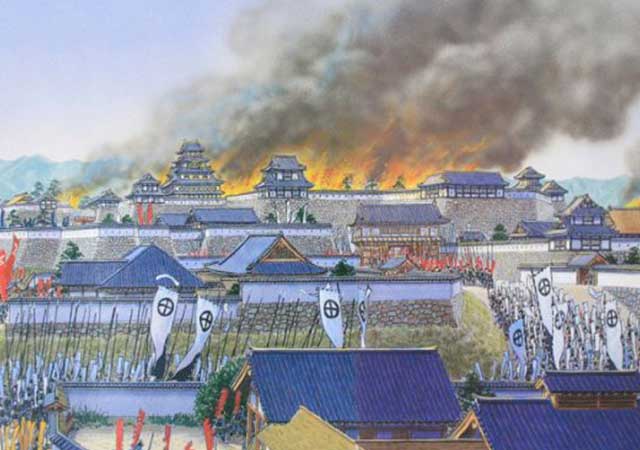
Fushimi can perhaps be considered one of the most “unfortunate” castles of the Sengoku Jidai period. The original castle was built by Toyotomi Hideyoshi in the southeast of Kyoto in 1594 as his residence in the imperial city.
-
The Siege of Otsu Castle
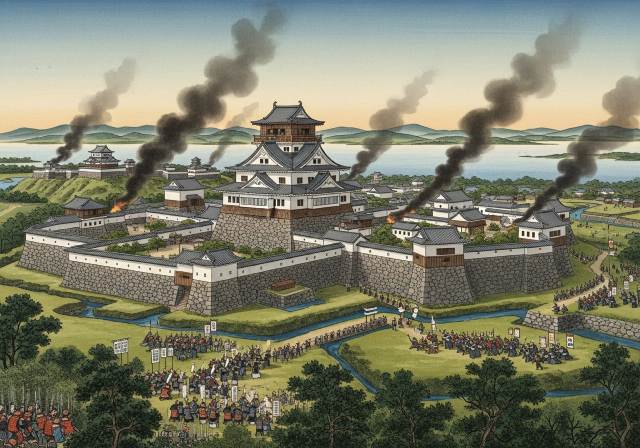
The siege of Otsu Castle was part of the Sekigahara campaign, during which the so-called Eastern Coalition, led by Tokugawa Ieyasu, fought against the Western Coalition, led by Ishida Mitsunari. Otsu Castle was built in 1586 by order of Toyotomi Hideyoshi near the capital Kyoto, on the site of the dismantled Sakamoto Castle. It belonged to the type of “water castles” — mizujō — as one side of it faced Japan's largest lake, Lake Biwa, and it was surrounded by a system of moats filled with lake water, which made the fortress resemble an island.
-
The Siege of Shiroishi Castle
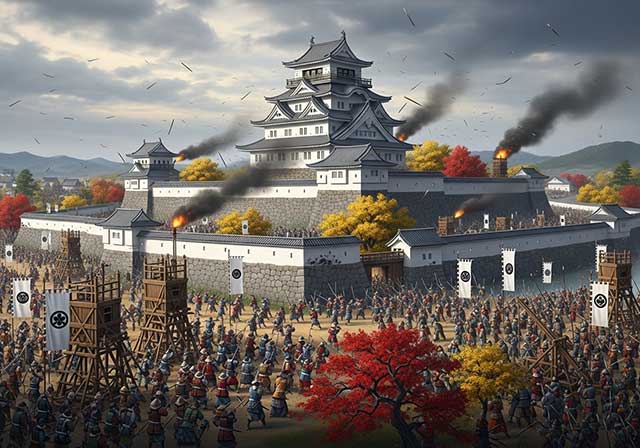
The siege of Shiroishi Castle was part of the Sekigahara campaign and took place several months before the decisive battle of Sekigahara. The daimyo of Aizu Province, Uesugi Kagekatsu, posed a serious threat to Tokugawa Ieyasu's plans to defeat the Western Coalition, and Ieyasu decided to curb his actions with the help of his northern vassals. To this end, he ordered Date Masamune to invade the province of Aizu and capture Shiroishi Castle.
-
The Second Siege of Jinju Castle
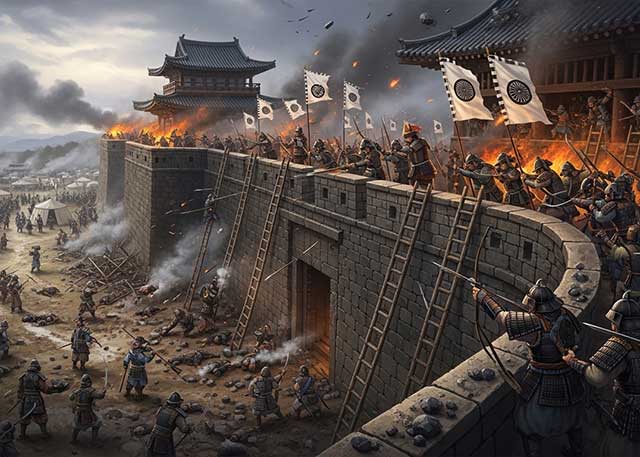
During the two Korean campaigns of the 16th century, the Japanese repeatedly had to capture enemy fortresses and defend occupied or constructed fortifications from the combined Korean and Chinese forces. Among all the operations of that time, the second siege of Jinju Castle is considered the most interesting from the point of view of siege warfare.
-
The Siege of Takamatsu Castle
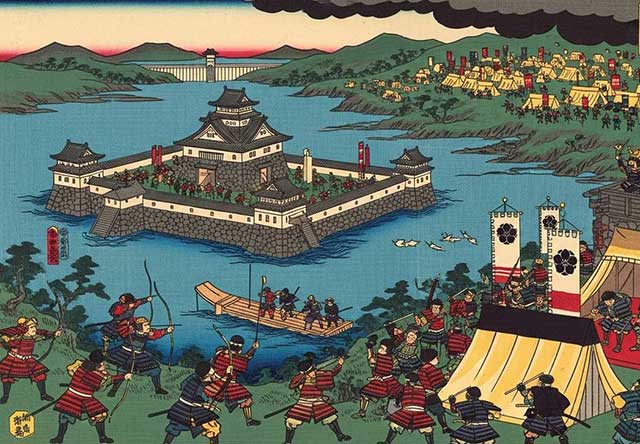
The siege of Takamatsu Castle in Bitchu Province is considered the first mizuzeme, or “water siege,” in Japanese history. Until then, such an original tactic had never been used.

